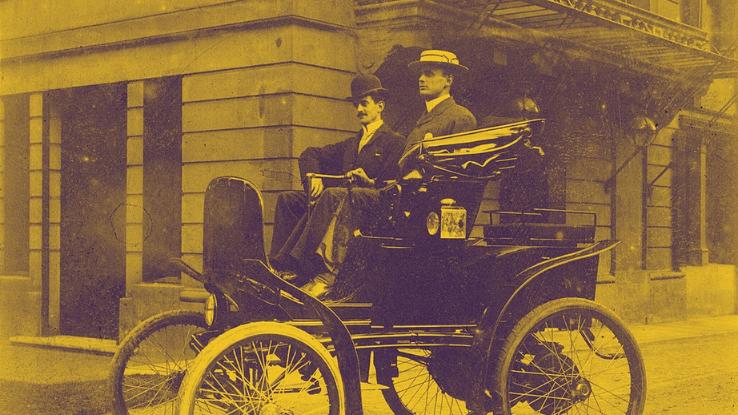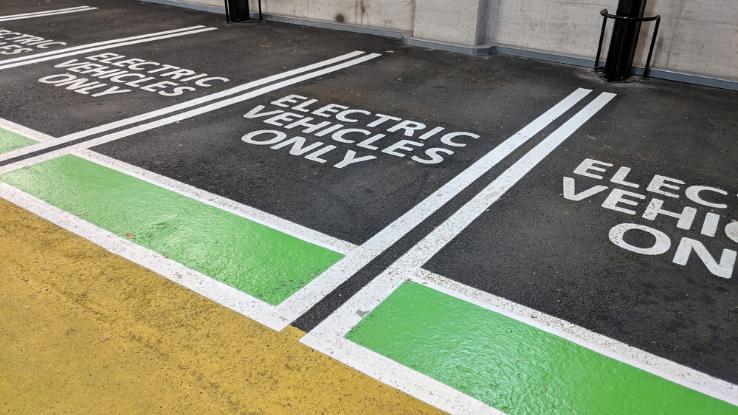Electric Cars: The Technology of the Future, Two Centuries Ago

Today, electric cars account for about 1% of cars on the road — but that doesn’t mean there aren’t millions of them out there. More and more electric cars across the United States and the world are selling each day, helping people bid farewell to their dependency on fossil fuels in the process. Rising gas prices, coupled with some enticing tax incentives, are tempting increasing numbers of people to go electric.
Electric vehicles, or EVs, hit a major turning point in 2015. That year, the number of EVs on the road surpassed the 1 million mark worldwide. As of 2020, the total count of EVs surpassed 10 million units across the globe. So many people agree on the value of EVs that President Biden incorporated funding for more charging stations and for high-efficiency EV production in his 2021 infrastructure plan. In early August 2021, Biden also set a goal for 50% of car sales to be EVs by 2030.
Witnessing this rapid escalation, it feels like the future is now. Weaning people off of fossil fuels can feel new and revolutionary. But just how new and innovative are electric cars, anyway? It turns out, electric cars are a lot older than Tesla, the world’s leading EV manufacturer. The idea even predates Nikola Tesla, the car company’s namesake and famed engineer who invented the early induction motors that are now used in EVs across the globe. Teslas and other electric cars may offer a smooth ride today, but the EV’s journey toward widespread acceptance has been a long, bumpy road.
The 19th Century Roots of Electric Vehicles

According to the U.S. Department of Energy (DOE), EVs are so bygone and have such an intricate global history that we can’t pinpoint when the first one was created. The DOE cites 1828–1835 as an era when EVs were starting to become a reality. Horse-drawn carriages were the primary mode of transportation back then, and light bulbs weren’t available yet. Batteries, however, were invented in 1800. That allowed blacksmiths and other inventors to use them in horseless carriage (an early name for motor vehicles) prototypes.
Although the earliest known crude EV was made by Robert Anderson in 1932, the U.S., Hungary, the Netherlands, Britain and France all produced early models of EVs, with the first “successful” EV debuting in 1890. Several years later, Des Moines, Iowa’s, William Morrison invented a six-passenger car that could reach speeds of 14 miles an hour. Soon, there were 60 electric taxi cars in New York City (pictured above).
At the onset of the 20th century, the electric car became a standard mode of transportation. People preferred electricity to steam, another popular energy source at the time — likely because starting a steam-powered car back then took at least 45 minutes.
It wasn’t until 1908, when Henry Ford released the Model T, that the tide turned in favor of gas-powered cars. It wasn’t the fuel source people preferred, either; it was the price. In 1912, the cost of a Model T was $650, and an electric car went for $1,750 at that time. That’s $17,838 versus $48,027 by today’s standards. Ford was able to mass-produce the Model T, which is also what made it so much more affordable.
Electric Cars in the 20th Century and Beyond

Interest in electric vehicles all but vanished until the 20th century’s latter half, when gas shortages in the 1960s and 1970s prompted a renewed interest in EVs from populations all over the world. The movement didn’t have as much momentum as it does today, but that could have something to do with accessibility. As mentioned, the number of EVs sold annually has been increasing. When new technology becomes more accessible, change becomes increasingly possible.
And it helps if a widely known, capable innovator is at the forefront of that change. NASA may have been the biggest advocate for (and innovator of) electric vehicles in the 1900s. Many of the NASA rovers that explored the moon and Mars were powered by electricity — gas-powered rovers wouldn’t have worked so well in non-Earth atmospheres.
Of course, there were still stalls in progress. None of the EVs engineered by automakers could exceed 45 miles per hour until the 1990s. That’s one key reason why it took the vehicles so long to take off. Another major factor was the lobbying from oil and gas companies towards state and federal governments, essentially “killing” the electric car before it could take off. (The 2006 documentary Who Killed the Electric Car? explores how this process impacted the EVs of the mid-1990s.)
It wouldn’t be until the election of Barack Obama in 2008 that the United States would start seriously investing in electric cars. That same year, automaker Tesla sold its first EV. Tesla had been founded five years prior to its first sale. Now, Tesla is one of the most popular automotive brands in the world.
However, that doesn’t mean that no progress was made in the interim. In 1990, the Clean Air Act passed by Congress was a bipartisan milestone. It also passed the Energy Policy Act of 1992, which aimed to lessen the U.S.’s dependence on fossil fuels. This slow-moving progress contributed to our eventual embrace of EVs.
The Future Is Electric

As nostalgic as the scent of gasoline can be for some, the future is electric. In 2021, gas prices surpassed the $3.50-per-gallon mark in more than 10 states, and investing in an EV can significantly cut those costs on fuel. That’s hundreds or thousands of dollars saved, depending on how much you drive. And, depending on the automaker you choose and your geographic location, you may be eligible for tax credits at the state and federal levels.
Savings aside, the future may also be electric because cleaner air is always a good thing. But, EVs aren’t necessarily a solution to climate change. While it’s helpful to our environment when a car doesn’t run on fossil fuels, if the alternative power source isn’t also a form of clean energy, there’s still more work to do. EVs themselves may not emit the greenhouse gas emissions that lead to climate change, but their manufacturing process still does — and “coal-fired plants often provide the energy to power electric vehicles,” notes the University of Miami.
In 2021, Tesla’s least-expensive car goes for over $39,000. There are more affordable options, like the Hyundai Ioniq Plug-In Hybrid, which goes for a little over $27,000. It remains to be seen if EVs have as long of a lifespan as some of the used cars still on the road today, but the future could become more electric if the technology and the vehicles themselves become more affordable for everyone.
As innovators continue to bring to life their ideas for improving cars and making Earth a healthier place, it’s difficult to say what the next big thing will be. It may not be surprising, however, if it turns out to be an electrifying idea that’s already been thought of.





